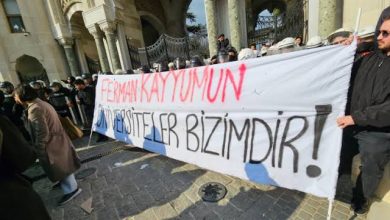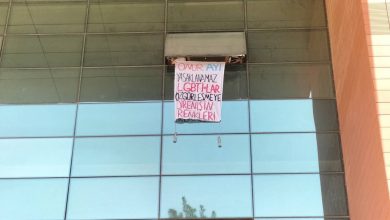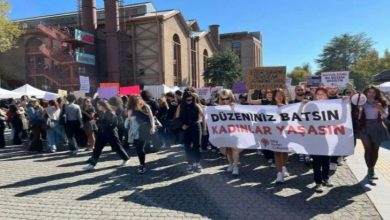*Ziyad Ahmed
How did the tradition of decorating a New Year’s tree begin at Yıldız Technical University (YTÜ), why are there issues surrounding it, and how is the decoration continuing?
Since last year, the New Year’s tree decoration event at Yıldız Technical University (YTÜ) campus has emerged and almost become a tradition. This year, it once again took place in a lively but controversial manner. Although this event might seem like a simple decoration activity, it is rooted in solidarity and the fight for student rights. In this article, Elif, Murat, and Doğa shared their experiences around the New Year’s tree issue.
This event first occurred last year. Elif recalls those days:
“Initially, a few students decorated the tree with their own resources, but security immediately came and removed the decorations. That continued for a few days. Then, a collective call was made by student clubs to decorate the tree, and we went in large numbers to decorate it again. During that process, we received solidarity from our friends at other universities. Some of them even decorated trees on their campuses. This spirit of solidarity excited us a lot.”
This year’s tree decoration seems to have become more difficult. Murat recalls the discussions at the beginning of December:
“We were asking ourselves whether we would decorate the tree this year. When we heard that the rectorate wanted to cancel the spring festival, we anticipated they wouldn’t allow the tree decoration either. And we were right. A few students started decorating the tree again, but security removed the decorations. This time, 18 student clubs quickly took action and called for a collective decoration event on December 11 at 16:00. However, as December 11 approached, we learned that the rectorate had banned decorating the tree and had set up an alternative tree in a far corner of the campus. Despite this, we didn’t give up on our chosen tree and proceeded as planned.”
Doğa answered our question, “How did December 11 go?” as follows:
“We couldn’t exactly predict how many people would come that day. The rectorate’s ban might have deterred some students. But by around 16:00, we started gathering in front of the cafeteria, and our numbers quickly grew. Everyone came with their decorations. We walked from the cafeteria toward the tree’s location, singing songs and chanting various slogans. When we reached the tree area, we encountered a group of jihadist students trying to block us, along with security officers protecting them. This upset us, but it also fueled our determination. After pushing the jihadist group away from the area, we decorated our tree freely and immortalised those moments with photos. We then continued the celebrations.”
That night, the decorations were once again removed. Elif described the events of the morning of December 12:
“Yes, after 3,000 people gathered and decorated the tree, the decorations were again removed during the night. As a result, another call for a gathering was made on the morning of December 12. This time, we brought not only our decorations but also our anger with us. When we arrived at the tree area, we found the jihadist group waiting on the other side of the street. Security advised us to ‘decorate the tree freely and leave’ this time. However, we didn’t want to leave the area without guaranteeing that our decorations wouldn’t be retaken. The jihadist group tried to provoke us, but we drowned out their voices with ours. In the end, we got a guarantee from the rectorate that the decorations wouldn’t be removed.”
Murat evaluated the process:
“This process showed us how the university administration’s opposition has encouraged some religious-conservative groups. But despite all the pressure, we weren’t intimidated. Although this decoration event might seem trivial, it was actually a struggle for our rights and freedoms. We came and decorated; they removed it; we gathered again. Now, an important tradition has been established on the campus, and I’m happy to be part of it. I’m looking forward to next year!”



